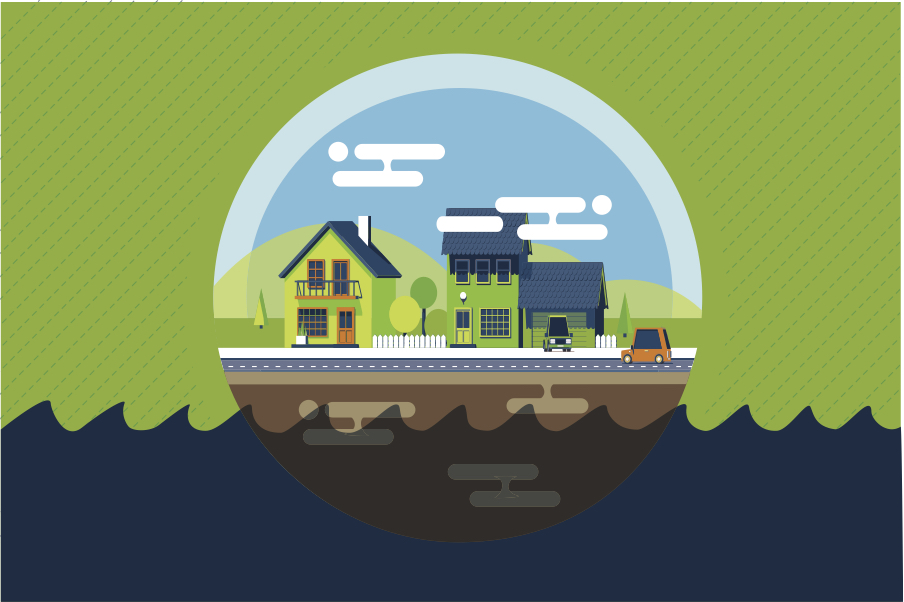
It’s time to stop using the words “unprecedented” or “one in a pick-your-large-number-year flood” to fool ourselves into believing that we’re experiencing one-off weather that can’t be defended against.
After last year’s season of record-setting storms, we had the opportunity to learn some valuable lessons. What’s more, we already possess the tools to apply these lessons to the problem, if we’re bold enough to do so.
First, stop building and rebuilding in areas that experience repeated floods. This requires political backbone both locally and nationally because the incentives involved are misaligned. Local governments set zoning rules and collect property taxes, and local builders profit from construction. But neither of these groups pays for rebuilding after a flood. Taxpayers elsewhere do, through state and federal disaster assistance.
The relatively lax zoning laws and building codes in Texas, for example, where Hurricane Harvey caused widespread flooding and devastation, have helped keep housing prices low and the population growing. But this shifts the full costs of building onto others. To help align local and national incentives, the federal government should publish a list of the local governments that allow or encourage building in flood zones.
Second, manage storm-water runoff by investing in green infrastructure and traditional engineered controls (such as detention ponds), and cut back on surfaces that are impervious to water.
Third, discourage the two behaviors that cause problems in flood-prone areas: widespread refusal to buy flood insurance and a general unwillingness to evacuate. Even though 2.5 million homes in Florida, where Hurricane Irma hit last September, are in Federal Emergency Management Agency-designated danger zones, only 42 percent of homeowners there had flood insurance. Change will be slow to come as long as homeowners are permitted to forgo insurance and then receive grants for rebuilding.
Behavioral biases—overconfidence in good fortune, for one, and an inability to understand risk and probabilities—also put lives in danger. Too many decide at the last minute to “wait it out.” Hurricane Harvey’s dire forecast came two days in advance. Government evacuation operations that need to focus on citizens who are immobile should not be overwhelmed by the needs of those who had the wherewithal to evacuate. An emergency law forcing regional hotels and shelters to take pets might go a long way toward improving future evacuation rates. In the face of a hurricane, the government needs to be able to impose emergency rules.
Fourth, and finally, government leaders must face the science of climate change and the reality that extreme weather events are likely to occur more often. In and around Houston, over the past three decades, the frequency of intense downpours has nearly doubled. One cannot know whether the changing climate has made this one single weather event more intense, but an increased frequency of extreme storms is entirely consistent with expectations. Climate change denial prevents people from taking appropriate steps to adapt to the new reality.
Storms like Harvey and Irma will be destructive in unpredictable ways despite the best preparations. But local, state, and national leaders have the responsibility to see that Americans are ready, and that damage and loss are kept to a minimum.
A version of this editorial first appeared in Bloomberg View. Paul Ferraro is a Bloomberg Distinguished Professor in the Bloomberg School of Public Health, the Carey Business School, and the Whiting School of Engineering at Johns Hopkins University.




